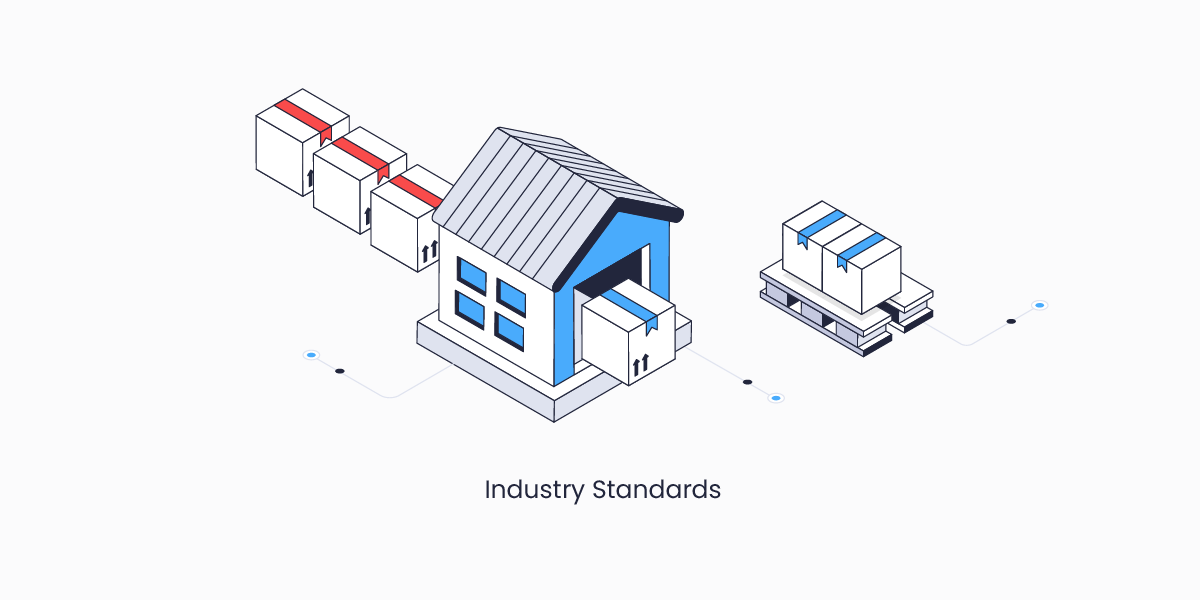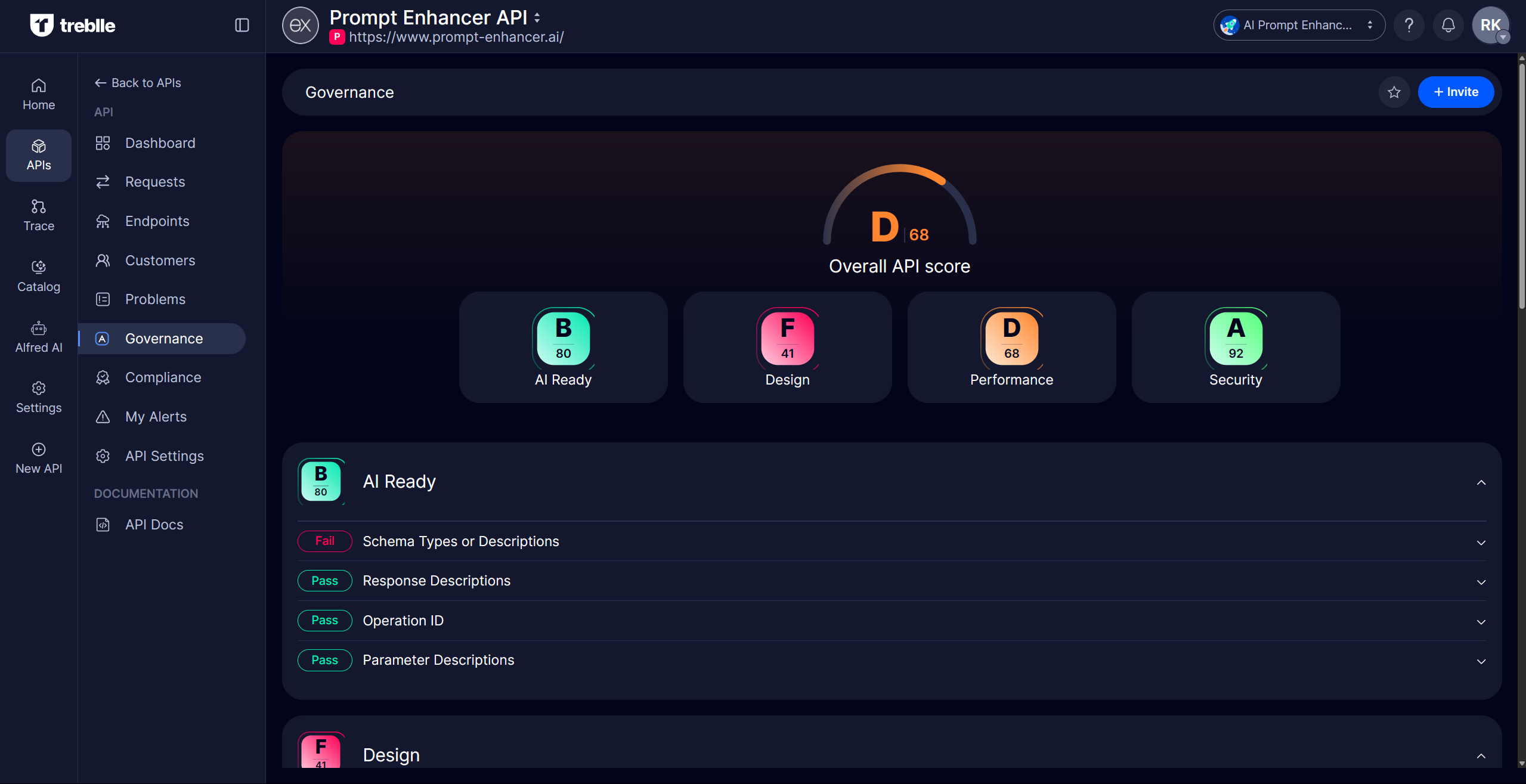5 min read
Learn how to establish and enforce API governance standards. From design and security to performance and compliance to using real examples and Treblle’s governance features.

Maintaining quality, consistency, and security across your APIs starts with solid governance.
In this article, you’ll learn what API governance entails, why it matters from your first project, and how to implement it.
We’ll refer to the AI Prompt Enhancer repository as a concrete example.
API governance is the framework of policies, processes, and standards you use to design, develop, document, secure, and manage your APIs throughout their lifecycle.
By setting clear rules for naming conventions, security headers, versioning, and more, you ensure that every endpoint meets the same quality bar and behaves predictably.
Even if you’re building your first API, defining basic guidelines early can save time on debugging and refactoring.

Consistency: Apply common patterns (URL structure, HTTP methods, response formats) so consumers don’t have to relearn between endpoints.
Quality Assurance: Catch missing documentation, insecure headers, or performance gaps before code reaches production.
Security: Enforce authentication, rate limits, and headers uniformly to protect data and reduce risks.
Scalability: As your API surface grows, well-defined standards make additions and handoffs smoother.
Maintainability: Updates and audits become straightforward when you follow a checklist, not ad hoc tweaks.
Developer Experience: Clear expectations and examples speed up internal and external integration.
A consistent design makes your API intuitive. In the AI Prompt Enhancer example, RESTful routes follow resource-based patterns:
// controllers/prompts.js
router.post('/', enhancePrompt); // Create
router.get('/', listPrompts); // Read (list)
router.get('/:id', getPrompt); // Read (single)
router.put('/:id', updatePrompt); // Update
router.delete('/:id', deletePrompt);// DeleteKey design checks include:
URL naming conventions (plural nouns, kebab-case or snake_case)
HTTP method alignment (GET for reads, POST for creates, etc.)
Response shape and status codes
Versioning strategy (URI-based /v1/ prefix or media-type versioning)
Good docs guide both your team and external users. The AI Prompt Enhancer uses OpenAPI to generate its Swagger UI at /docs:
app.use('/docs', swaggerUi.serve, swaggerUi.setup(openApiSpec));Documentation standards should specify:
Required sections (overview, authentication, error codes)
Example requests/responses for each endpoint
Parameter details and schema definitions
Update process (who edits the OpenAPI spec and when)
Security rules protect your API and its clients. In the Prompt Enhancer, you might enable Helmet, rate limiting, and input validation:
app.use(helmet());
app.use(rateLimit({ windowMs: 60_000, max: 100 }));Security checks include:
Authentication and authorization schemes
Input and payload validation
Rate limiting and throttling
Mandatory security headers (CSP, HSTS, X-Frame-Options)
Encryption requirements (HTTPS enforcement)
Your API should meet target response times and resource usage. In our example, you might enable compression:
app.use(compression({ level: 6 }));Performance standards cover:
Latency targets (p50, p95, p99)
Payload size limits and compression
Caching policies (cache-control headers, ETag)
Connection limits and timeouts
If you handle personal or regulated data, you need clear rules for privacy and audit. For example, Prompt Enhancer may restrict origins via CORS:
app.use(cors({ origin: allowedOrigins }));Compliance checks include:
Data privacy regulations (GDPR, CCPA)
Industry rules (PCI DSS, HIPAA)
Retention and audit logging policy
Consent and data deletion workflows
Defining governance is easy, but enforcing it at scale is harder.
Treblle’s API Governance feature automates checks against your OpenAPI spec and live traffic, giving you an objective score and a list of actionable fixes.

Treblle breaks down governance into four scoring categories:
AI Ready: Verifies operation IDs, parameter descriptions, response documentation, and schema completeness to prepare your API for LLM integrations.
Design: Checks URL patterns, pluralization, HTTP method use, examples, versioning, and contact info.
Performance: Validates response times, compression headers, CDN usage, HTTP/2 support, and cache-control settings.
Security: Ensures proper headers (CSP, HSTS, etc.), HTTPS enforcement, security schemes, and protection against common vulnerabilities.
After each analysis, Treblle assigns a grade (A–F) and an overall score. You can track improvements as you iterate.

If you prefer working directly with your spec file, Treblle’s API Insights tool evaluates your OpenAPI JSON or YAML:
Web Dashboard: Upload a spec at apiinsights.io
VS Code Extension: See scores as you edit your openapi.yaml
CLI Tool: Integrate checks into CI/CD pipelines:
treblle-cli insights openapi.yaml --minimum 80macOS App: Analyze offline from a native client.
You can check the AI Prompt Enhancer API Governance Report here.
Start with Your Spec: Define endpoints, schemas, and examples in OpenAPI before writing any code.
Automate Early: Add Treblle’s SDK to capture real-time telemetry and governance data from day one.
Integrate into CI/CD: Fail builds when governance scores drop below your threshold.
Review Regularly: Schedule weekly governance audits to catch drift.
Share Scores with the Team: Use Treblle’s dashboards and comments to keep everyone aligned.